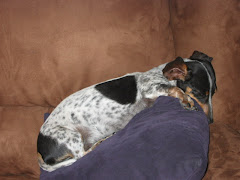First-Aid-Kit
1. Adhesive Bandage (Elastoplast etc) 2.5 cm wide
2. Antibiotic Powder
3. Antiseptic Spray (blue, purple or pink). e.g: Chloromide or cetrigen spray.
4. Antiseptic Wash
5. Aspirin e.g.: 1/4 of a tablet per 10kg twice daily as required, but for no more than 3 days.(for pain relief).
6. Bucket or Elizabethan Collar
7. Cotton Wool (1 roll not balls)
8. Gauze bandage (cotton) 2.5 cm wide
9. Hydrogen peroxide 3% Solution
10. Iodine Solution (Betadine)
11. Liquid Tears
12. Paraffin Oil
13. Salt- To induce vomiting 3 teaspoons in half a cup of warm water or a teaspoonful on the back of the tongue.
14. Scissors
15. Syrup Of Ipecac- To induce vomiting 2mls per kilogram of body weight.
16. Thermometer. Normal temperature is 38.5c
Keep the kit in a cool clean place, in a portable case. Take it away with you. Wherever the dog goes, it goes.
First-Aid-Treatment
Fractures
Try to have someone help hold the dog and a muzzle may be necessary.Use a large piece of cotton wool and wrap it around and around the leg suspected of being fractured. Then use a plain cotton bandage or Elastoplast to wrap over the cotton wool. Be firm but not constricting. This will splint the leg satisfactorily for transporting to the vet.
Wounds
Any fresh wound must be treated with first aid, either by you first and then your vet or just by your vet. Depending on how deep and sore it is will determine the need for an anesthetic or sedation. Minor wounds, which do not require stitching, can be attended to by yourself providing you have the basic first-aid kit. You may need someone's assistance so that your hands are free, but do not attempt it if the dog is in too much pain. It is not worth saving money and putting your dog through the pain or you getting bitten. It is quicker and easier to sedate the dog and repair the wound without the dog suffering.
Why clean the wound? -
Prevent infection - which reduces pain and inflammation and it increases healing time. Dogs enjoy lying in sandy and garden areas, swimming and chewing on old bones that are full of bacteria. These provide an ideal way for an infection to enter a wound.
When you find a wound, cut or abrasion the first thing to do is:
- Trim away the hair as short as possible.
- Prepare a solution of an antiseptic wash (a solution means to dilute the concentrate. Dilute iodine with warm water until it is a weak tea color)
- Bathe the wound to remove debris like sand, grass, and hair.
- Always begin in the center of the wound and work outwards. Dispose of swab (cotton wool piece) after each time you reach the outer edge of the wound.
- Allow to dry or pat dry the wound with a dry swab.
- If a dressing for drawing out infection is needed apply now with a poultice and an elastoplast bandage (take care not to apply too much pressure).
- An Elizabethan collar may also be needed.
- If the wound is OK. to leave open, apply the wound sealer. This also helps keep flies away and deters the dog from licking.
- Licking the wound at this stage will not help. It would only introduce more bacteria into a clean wound and keep it moist which slows healing and aids bacteria growth. When a dog licks a fresh wound that has a lot of debris in it there is some benefit in having the wound cleaned, but not as much as in using an antiseptic solution.
- If, when you find the wound the infection has already become an abscess (puss) then you must trim the hair as explained earlier and then apply diluted hydrogen peroxide at a 3% solution. This will bubble up and clean up the abscess, then continue as a normal wound.
- Most abscesses will require veterinary attention as antibiotics are essential for healing and often surgery is required to repair the damaged area.
On a more serious note, there could come a time when you have to make the gut wrenching decision to put your dog down. For a detailed procedure of dog euthanasia and to help prepare you for the day, there is a tutorial at http://here-is-your.info/dog-training/when-to-put-a-dog-down.php
Article Source: http://EzineArticles.com/?expert=Craig_McPherson http://EzineArticles.com/?First-Aid-Kits-For-Dogs---What-You-Need&id=1543144
Dachshunds In Film: The Lemon Drop Kid
12 years ago













1 comment:
Everyone should have a first aid kit for their pets and themselves
Post a Comment